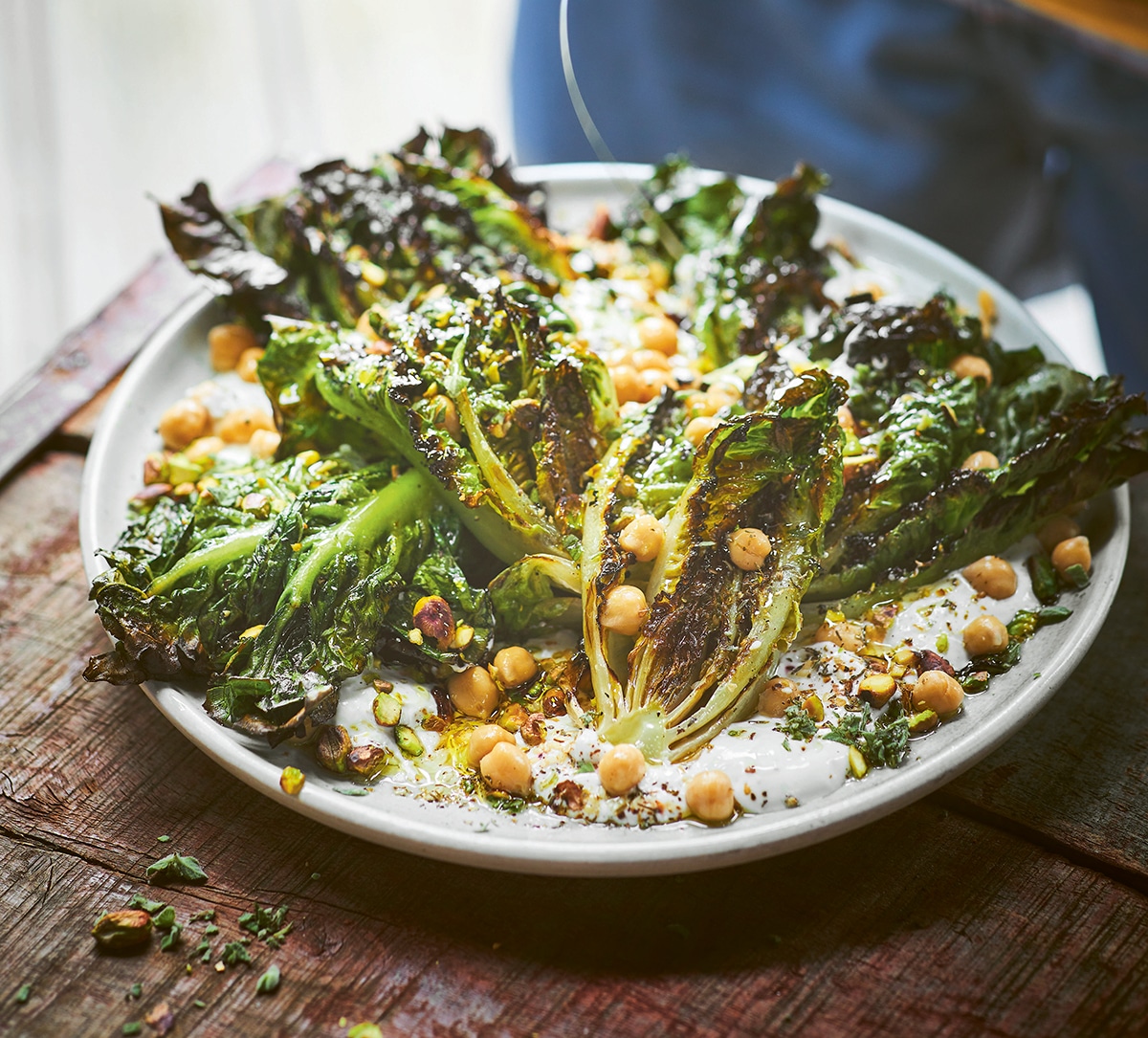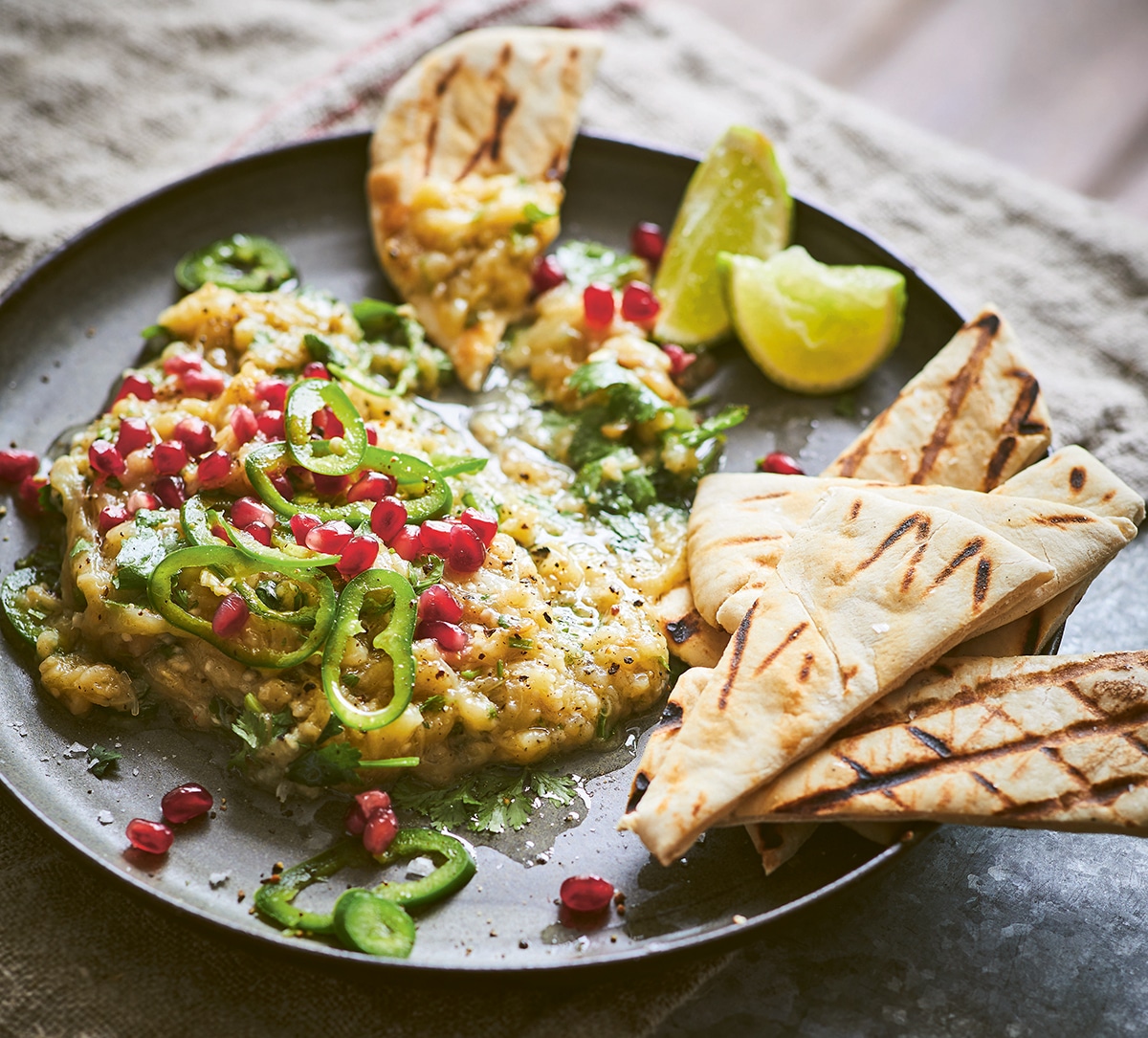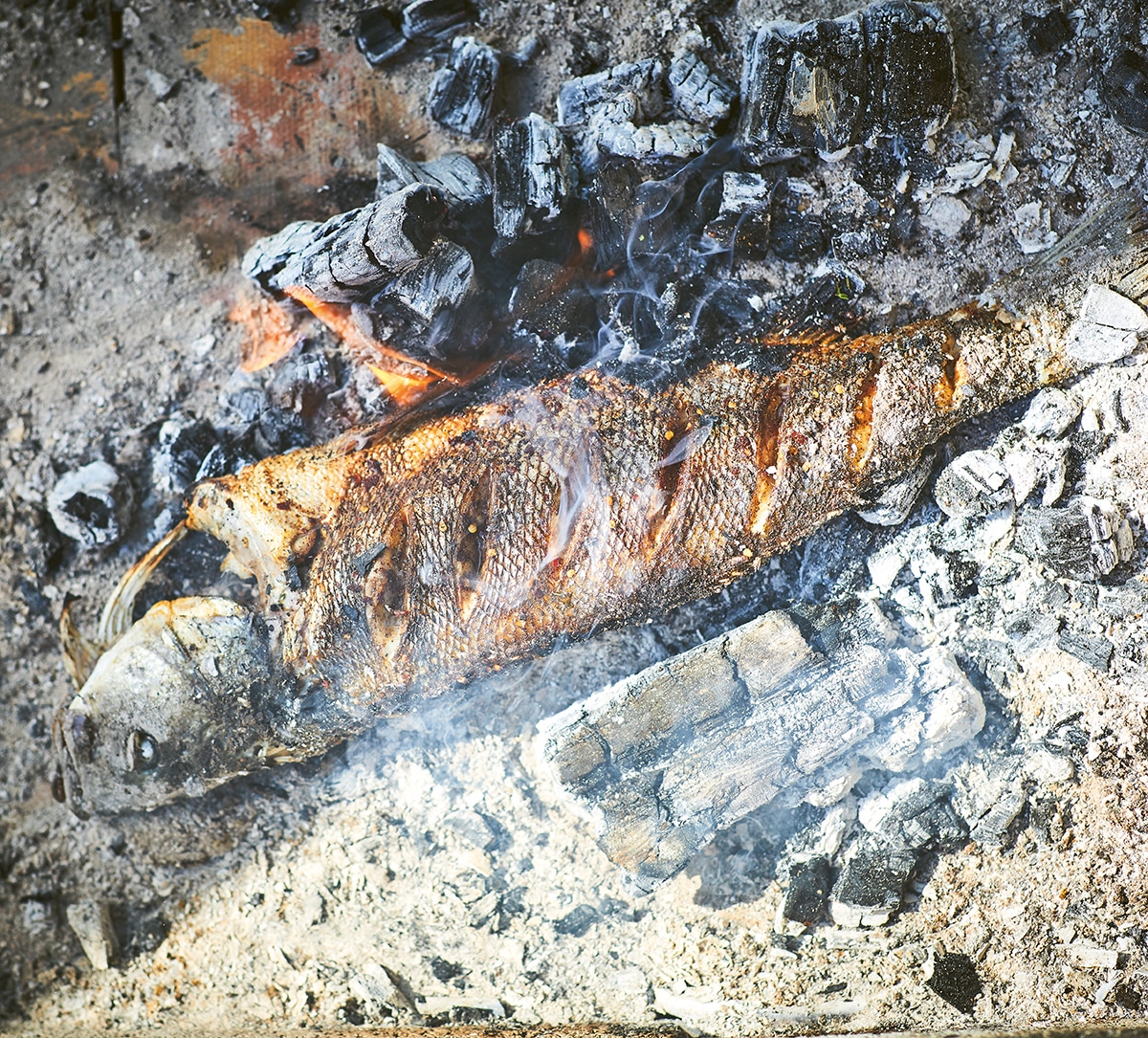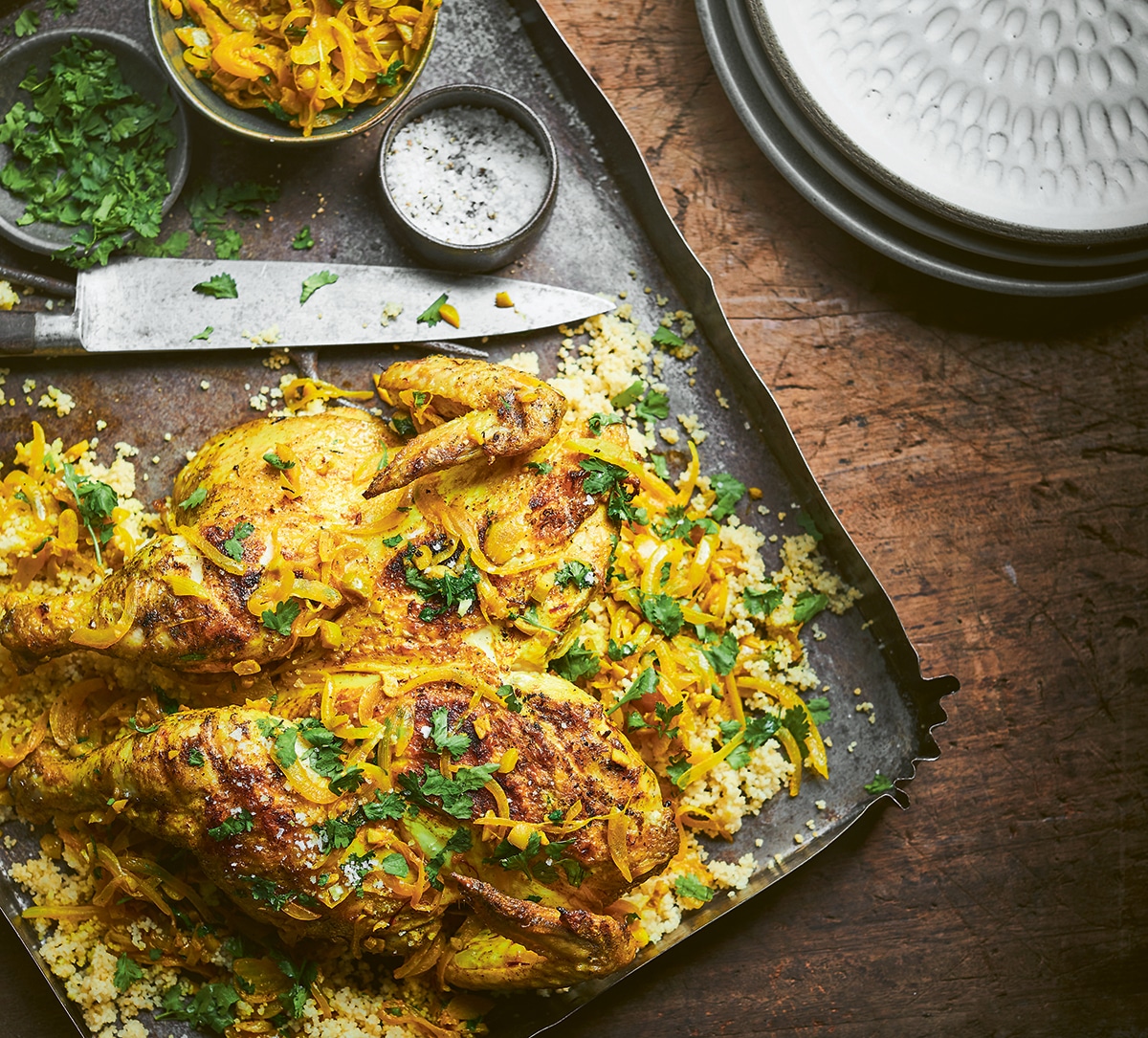Q&A: James Whetlor
Chef and barbecue expert James Whetlor on cooking over fire, building your own barbecue and sourcing the right ingredients
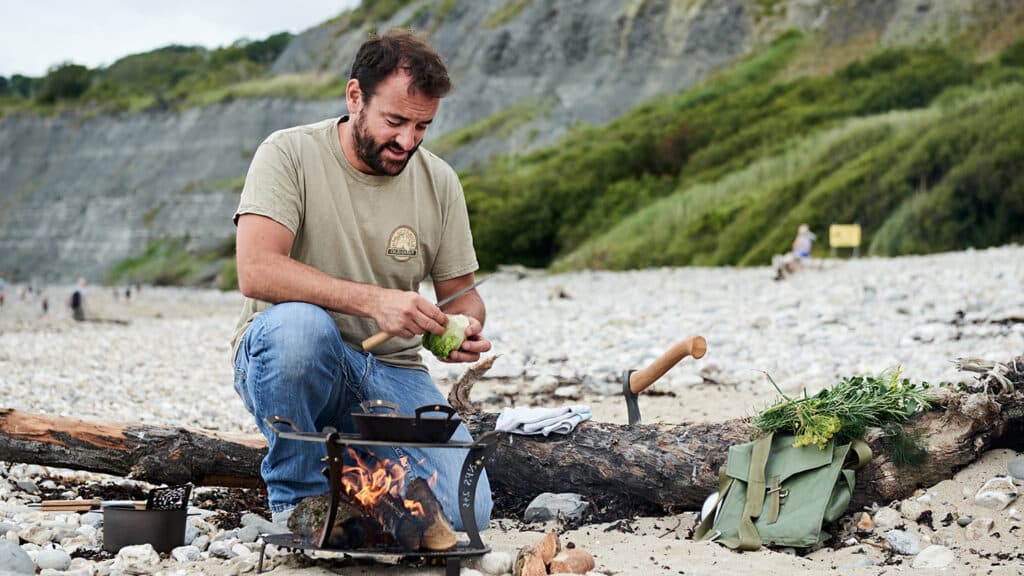

“IF YOU LIGHT A FIRE AND START COOKING OVER IT, PEOPLE INSTINCTIVELY COME AND SIT NEXT TO YOU. IT’S IN OUR MAKEUP”
Interview: Mark Riddaway / Portrait: Neil White
James Whetlor started his cooking career at The Eagle, the legendary gastropub in Farringdon, before returning to his home county of Devon to work as a chef at River Cottage. He went on to found Cabrito Goat Meat, which takes kid goats that would otherwise be euthanised by the dairy industry and raises them within a network of high-welfare farms to supply meat to butchers and restaurants. James is also a whiz with a barbecue. His new book, The DIY BBQ Cook Book, provides instructions and recipes for creating your own barbecue from upcycled scrap and inexpensive building materials.
You’re clearly a man who loves cooking outdoors over fire. What’s the appeal?
The main thing that comes to mind is a Michael Pollan quote about how no one ever comes in and huddles around a microwave. There’s something deeply primal about cooking over fire. If you light a fire and start cooking over it, people instinctively come and sit next to you. That’s simply part of our makeup.
Also, cooking on a barbecue, you get flavours and textures that you just can’t with gas or electric. Boil up some purple sprouting broccoli on a hob and it’s delicious, but shove it on a barbecue and you get all the flavour of the broccoli plus the extra smoke and the charred edges and the rough textures. If you put some chicken in a tandoori marinade and then roast it in the oven, it’ll taste perfectly good, but it won’t have those seared edges and amazing variations in flavour and texture.
Finally, it’s enforced relaxation, because you can’t really leave it alone. If your life is as busy as mine, with two kids and work, having an enforced period where all you can do is basically sit in the garden watching something cook, that’s really good.
The DIY BBQ Cook Book explores how a barbecue can be conjured up from anything from a pile of breeze blocks to the drum of a washing machine. Are you a particularly practical man?
Not really. The first line of the book is: “I can’t put up a shelf.” That’s absolutely true. And the point is that you don’t have to have any real skills – just a bit of problem-solving and a certain amount of brute force. The book was born of my daughter’s sixth birthday. She wanted a party on the beach. I looked at my Big Green Egg barbecue and thought, I’m not lugging that all the way down. Instead, I picked up this washing machine drum that I’d smashed out of a broken washing machine. I took one of the grills from the Egg and laid it on top, and thought, I’ll give that a go. It was such a success I began to I wonder what else I could knock up.
All you need for a barbecue is somewhere to put the fire, a grill over the top, and something to hold it all in place. Eight breeze blocks, a bit of chicken wire and a paving slab, and you’ve got yourself something that will cook a whole lamb leg perfectly. A proper tandoor costs about £400 to buy, but you can buy three flowerpots and a bag of sand and make yourself a tandoor for £50.
BARBECUE, BOROUGH STYLE
You’ll find high-quality, high-welfare meat and poultry at Ginger Pig, Northfield Farm, Wild Beef and Wyndham House Poultry. For whole fresh fish, head to Shellseekers Fish & Game or Furness Fish Markets. Hickson & Daughter and Stark’s Fruiterers will handle the seasonal veg. Spice Mountain is a treasure trove of spices for your marinades and rubs, while Pimento Hill, De La Grenade, Arabica, Raya and Fitz Fine Foods between them offer a wide range of seasonings and sauces.
Does that approach of making something out of very little take us closer to the roots of American barbecue culture than a super-sophisticated outdoor oven costing hundreds of pounds?
I think it’s important with barbecue culture that we acknowledge where it’s from. I built a breeze-block smoker for the book, and I was very conscious that this technique of cooking – dig trenches, fill them with coals, splay the pigs out on top of iron poles and hang them over the trenches – is directly lifted from the Virginia tobacco plantations of the 16th, 17th century in America. That whole style of cooking came from enslaved Black people who had been stolen from Senegambia and brought across the Atlantic. These enslaved people kept part of their culture alive to such a degree that it seeped into US food. If you’ve ever seen Gone With The Wind, they have those amazing parties, all that amazing food, but who do you think cooked all the food? It was enslaved Black people using techniques we still use today and now celebrate as American barbecue culture.
In the book, you write in depth about the roots of US barbecue, but your recipes take in many other culinary influences, from Moroccan to Ethiopian, to Indian. What was behind that choice?
I love brisket and pork butts and sticky sauces and chicken wings and all that classic American stuff, but there are other parts of the world where people have been cooking over fire for longer than the USA has existed. According to the World Health Organisation, over half the population of the world still cooks over wood or charcoal every day. British barbecuing has come a long way in the past 10 years, and as we do with most things we’ve pointed our antennae towards America, but there’s much more diversity in barbecuing than we’re sometimes led to believe.

Let’s talk ingredients. What difference does the quality of meat make when you’re cooking on a barbecue?
A massive difference. If you’re eating rubbish meat from animals that have not been fed the best diets and not had the most exercise, it won’t have the flavour, the texture, the fat content. Sure, you can cover a lot of shortfalls in meat quality by covering it in a lot of sauce or smoking the hell out of it so it tastes of something other than the product, but that’s not the way I think. I learnt to cook at The Eagle. They might as well have tattooed it onto your skull: buy the best products you can and don’t mess with them. For ethical reasons, we should obviously be supporting higher-welfare, better-cared-for animals that come from a good supply chain that cares about its standards, but the meat tastes better too.
So, how should be go about sourcing meat?
In an ideal world, you should know the name of the farmer who produced your meat. I appreciate that for many people that isn’t very easy to do, but within a few miles of you there’s probably a very good butcher who does know the name of the farmer – and that’s good enough. The other thing that people underestimate about butchers is you can walk in there with questions. You can say: “I’ve got these people coming, I’ve got this to cook on, I quite fancy it tasting like this.” Your butcher will go: “Well, here are your options.” They know food, and they’ve made it their job to know food.
What’s the secret when it comes to barbecuing fish?
The trick is ‘hot’. I would always recommend people cook whole fish, because it will inherently hold itself together better than a fillet. Make sure it’s properly oiled, make sure it’s properly seasoned, and then cook it like you would a steak. I think that’s the way to think about it. Get the barbecue really, really hot, drop it on, and then whatever you do don’t fiddle with it. If you leave it alone, the skin won’t stick and you’ll get those little ridges where the grills are, and loads of nice little burnt crispy bits that give you lots of different flavours and textures. When you turn it, get your spoon or spatula under the top ridge of the fish and flip it over its belly. That way you, it should hold together. You’ll know it’s done once its eyes go white.
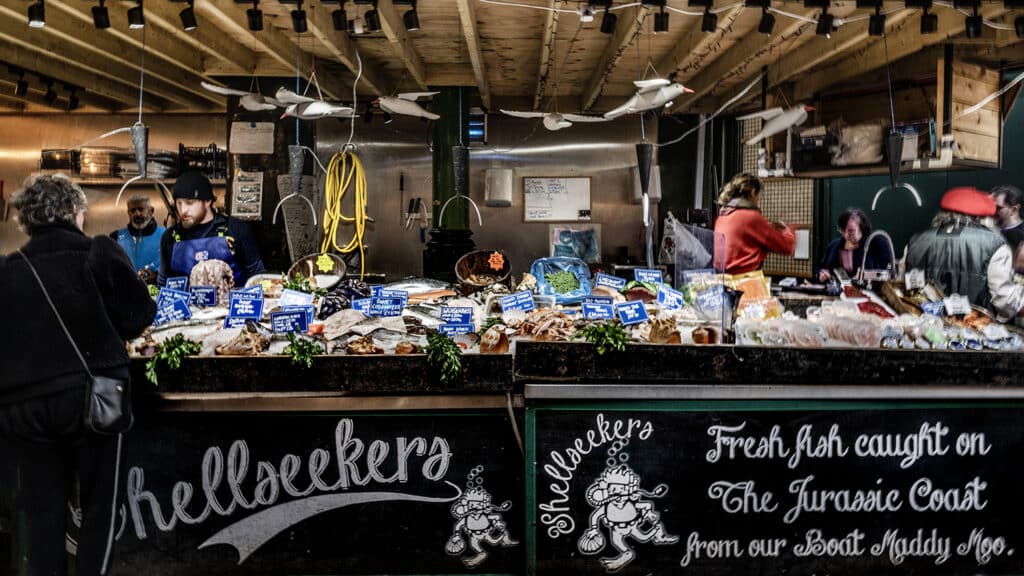
It’s not all about the protein though, is it? Unsurprisingly, as a former River Cottage chef, you take veg very seriously.
The seasonal stuff is just fantastic, right? Buy the best seasonal veg you can, stick it on the barbecue, a squeeze of lemon, a bit of salt, and eat it – amazing. For the book, we did some photography at Trill Farm Garden in Devon. They’ve got five acres, it’s all organic, and honestly, it is unbelievable what they achieve in that space. It was the end of August, so almost the perfect time to be barbecuing, and I had a load of their hispi cabbage, a load of leeks, a load of tomatoes. It all went on this massive barbecue that I’d built. Veg doesn’t require the tending and the prep and the cooking time that meat demands. Maybe trim it a little bit, marinate it and cook it for a few minutes. I was just cutting them in half, dipping them in olive oil, and throwing them on the fire. They were coming back charred and succulent and juicy. Just make sure your veg is properly seasoned, and you’ll have something genuinely fantastic in a matter of minutes.
